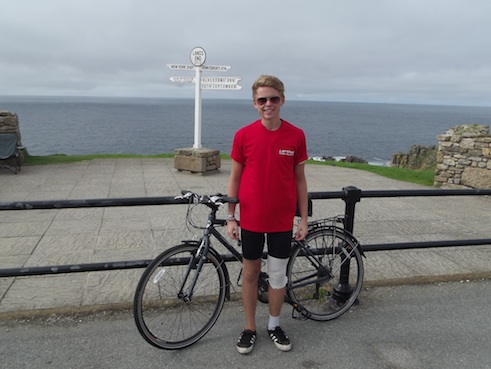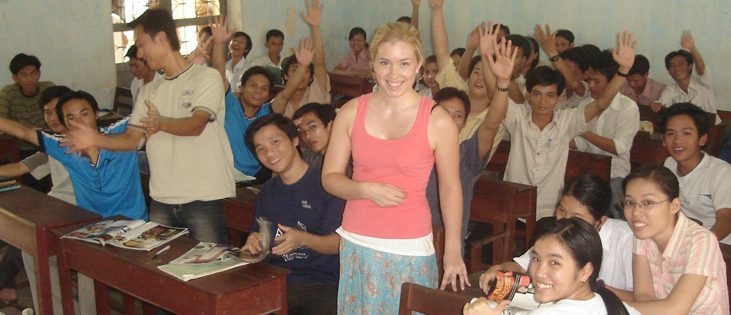By Roberta Geraci
fundraising for a gap year, part of the process!
1. Organise a charity sporting event
Try organising a charity sporting event to raise money, have fun and keep fit. You could try organising a team game or set a personal challenge, like Michael Njunge, who cycled on a 400 mile journey from his home in Langley, Berkshire, to LegoLand, Windsor, taking in three other Merlin theme parks around the country including Thorpe Park, Chessington World of Adventures and Alton Towers. Michael set a target of £800 to raise, which will help him reach his goal and allow him to take up his medical placement in Japan with Lattitude Global Volunteering in March 2012.
Why not try organising a charity football, rugby or hockey match for example. You could try and make it interesting by taking on your friend’s parents, or see if your school will be happy for you to arrange a teachers Vs students match. Try and get people to donate to watch and participate.
2. Donate for your guilty pleasures
Make a box to save up money every time you do something you shouldn’t. For example if chocolate is your sin, donate a pound every time you eat some. Try and get all your family and friends involved and challenge each other. You could even donate money every time u wasted 10 minutes on Facebook instead of doing something more productive!
3. Get partying
Try arranging a party and getting people to donate to attend, for food and for drinks. Some ideas might include; a seasonal party (like Christmas, Valentine’s day party, Easter party, a New Years Eve party, a themed party (like a murder mystery night, film night), or a disco or karaoke night.
What about organizing a Come Dine with me style competition between you and your friends, or try organizing a party based on your preferred destination like Ailsa. Ailsa has held a Fiji themed party, a cake sale, a ceilidh with raffle and is even planning a James Bond evening, among other ideas. Ailsa has already raised over £1,000, and she has more events in the works!
4. Be fancy
Fancy dress can be fun all year round! Whether it is seasonal (Halloween, Christmas, Easter etc..) or just to have a laugh, get you and your friends in funny outfits and have a contest with a small prize, get around the city and get people to donate to snap a picture with you (like dressing you all like famous movies character— Star Wars, pirates, etc). Sam, who is volunteering in Japan this September with Lattitude Global Volunteering, managed to raise over £100 by dressing up as a Dalmatian!
5. Challenge yourself
Run a marathon, cycle or walk miles, participate in a mountain climb or brave yourself to take on an obstacle course run (where people pay a small fee to add obstacles on your way).
David Logue, ran from his hometown of Leicester to Twickenham Rugby Stadium, to raise money towards his gap year teaching placement in Argentina. In February David and his friend, Jacob, ran over 100 miles, participating in the equivalent of four marathons! David explained “We chose to run during the February half term, as it was between our January and summer exams”. “When we saw that the England Vs France Six Nations Rugby match was taking place at Twickenham that week, we decided to run to the stadium.”
With Lattitude’s help, David secured coverage in The Leicestershire Mercury, This is Leicestershire, South Leicestershire College News and MKWeb, boosting awareness about the run and fundraising. In total David raised nearly £1,500 towards his placement and managed quite an incredible achievement.
Other inspirational examples are James, who went on a sponsored bike ride dressed as Spiderman and Sam who despite suffering with a knee injury, signed up for a half marathon, which he intends to do on crutches to raise the funds for his placement!!
Let us know if you’re planning something and we can help you raise awareness and more donations
6. Challenge others
Try organizing a quiz night or a “guess the number of” competition (for example using jelly beans, Easter eggs, keys, anything really!). Charge a small fee to participate and give a prize to the best guesses.
A good example is Mike, who with the help of his mother, Rosie, and the Hamble Valley Rotary Club, organised a quiz night to help raise money for new text books at the remote Secondary School, where Mike was volunteering, in North Tanzania.
7. Sell, Sell, Sell!!!
Why not hold a jumble sale or a Car boot sale to get rid of your old and unwanted clothes, video games, CDs, films etc. You could try setting up an eBay account or post for sale items on message boards. You could even take things a step further like Liam Taylor, by starting you own small business. Liam , who works full-time, thought of a great way to raise money for his placement in Japan. Each week Liam made Japanese sushi lunchboxes for his colleagues who all pay him to save them the time of making a healthy homemade lunch. Liam found they were becoming really popular and even introduced “Cheesecake Friday’s” to sell his homemade cheesecake for a £1 slice! Not only you will get instant revenues but it looks great on your CV too!
You can ask your friends and family to donate unwanted items too to increase your sales.
8. Odd Jobs -
Everybody hates chores, so why not offer to do it for them. You could offer to do gardening, DIY, walk your neighbour’s dogs, or babysit.
Why not ask your neighbours and offer your services in return for a donation, you could even do it in fancy dress to get noticed! It’s a great way to get to know your neighbours, raise money and improve your skills at the same time.
9. I dare you!
Here’s one for those of you with no shame! Owen Copping came up with the idea of a dare page where people would challenge him to do something in exchange for a donation. Suggestions raised so far include eating nothing but baked beans for 3 days, and offers to be a “slave” for 5 days. Owen set up a Facebook page and took offers from his friends. You could even do an auction to raise more money and have a bit more control. Like take bids on who would want to take you for a date! While we encourage you to have fun, please remember to be safe, stay legal and do not do anything you will regret for too long!
10. Show Off
Why not organise a show? It could be anything from a talent show, a fashion show, a magic show, to your own play or dance routine.
Elaine a former Lattitude volunteer organised her own Fashion show fundraiser to raise money for her placement in Ecuador. You can charge people to come watch, get people to donate to be a model for the day, you could even design your own clothes, or better yet, get people to donate to have their designs showcased. Why not talk to the Fashion students at your college and see if you can work together to hold a fundraiser. You could combine the event with other fundraising ideas such as raffles or after show parties.
Elaine held a fashion show as part of her fundraising for her overseas volunteering placement
Whatever you decide, please remember to do it safely and keep in touch so we can help raise awareness!




